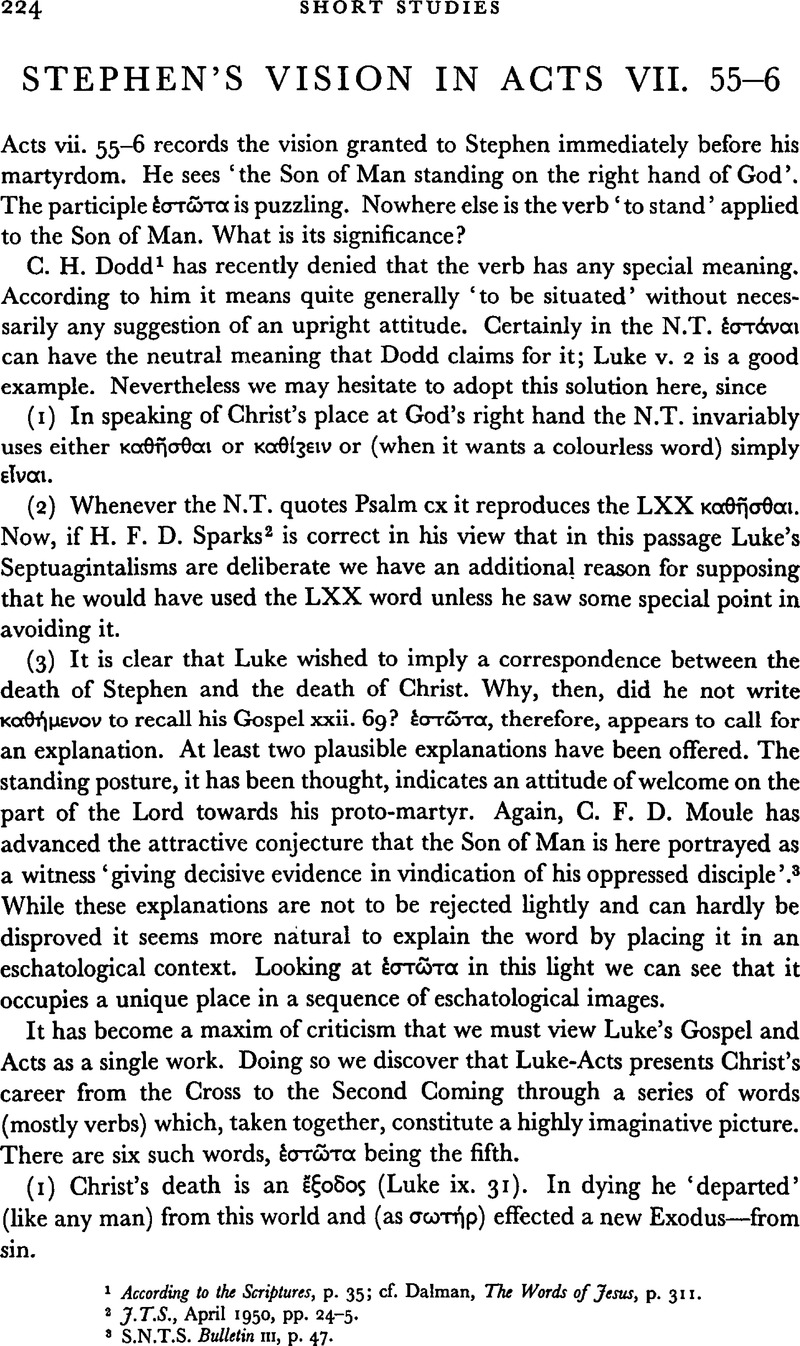No CrossRef data available.
Article contents
Stephen's Vision in Acts vii. 55–6
Published online by Cambridge University Press: 05 February 2009
Abstract

- Type
- Short Studies
- Information
- Copyright
- Copyright © Cambridge University Press 1955
References
page 224 note 1 According to the Scriptures, p. 35;Google Scholarcf. Dalman, The Words of Jesus, p. 311.Google Scholar
page 224 note 2 J.T.S., April 1950, pp. 24–5.Google Scholar
page 224 note 3 S.N.T.S. Bulletin III, p. 47.Google Scholar
page 225 note 1 The Glory of God and the Tranifiguration of Christ, p. 37.Google Scholar
page 225 note 2 Luke abides by the Jewish dogma that, except for a special act of grace, a man cannot endure the sight of God's δόξα. Even Paul was blinded by its light (Acts xxii. II).Google Scholar
page 226 note 1 See χρονίзι in Luke xii. 45 = Matt. xxiv. 48. The problem had arisen as early as I Thess. (iv. 1318) and was essentially the same when II Peter was written (iii. 4).Google Scholar
page 226 note 2 So, according to Dodd, in xix. 22–27 he transforms a non-eschatological parable into an allegory of the Second Advent (The Parables of the Kingdom, pp. 146–53).Google Scholar
page 226 note 3 The Epistle to the Hebrews, chapter ii.Google Scholar
page 226 note 4 See Cullmann, O., Christ et le Temps, pp. 113–18, and Le retour du Christ, chapter IV.Google Scholar
page 226 note 5 In fact Acts i. 6–11 forms an important part of Cullmann's evidence.Google Scholar


